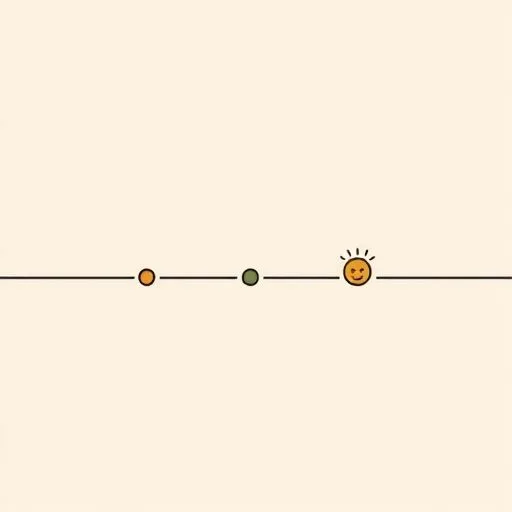
There’s a quiet revolution happening in how we develop our teams—one that recognizes that time is precious but growth is non-negotiable. As the crisp autumn air settles, I’m reminded that efficiency isn’t about cutting corners; it’s about working smarter, not harder. The research is clear: we can reduce training time by up to 60% while actually improving learning outcomes. That’s not just saving hours—it’s reclaiming potential. Let’s explore how we can make every learning moment count, creating teams that are both agile and deeply skilled.
How Can Micro-Moments Transform Training?

Imagine if learning felt less like a marathon and more like a series of refreshing sprints. That’s the power of microlearning—breaking complex topics into bite-sized, focused chunks that fit naturally into the workday. Research shows this approach can boost retention by 25-60% while cutting development costs in half.
The beauty? These micro-moments respect the natural rhythm of attention. Instead of fighting against our tendency to drift during hour-long sessions, we’re working with our cognitive wiring. A five-minute video before a meeting, a quick interactive scenario during coffee break—these small investments compound into significant skill building without ever feeling like “training.”
Can AI Personalize Your Learning Journey?

Here’s where technology becomes truly magical—AI that adapts to each learner’s pace and needs. Think of it as having a personal coach who knows exactly when you’re struggling with a concept and when you’re ready to advance. This isn’t about replacing human connection; it’s about enhancing it with personalized support.
Adaptive learning systems can identify knowledge gaps in real-time, serving up just the right content at just the right moment. No more sitting through material you’ve already mastered or rushing through concepts that need more attention. It’s like having a GPS for your learning journey—always recalculating the best route based on your progress.
Why Choose Blended Learning Models?

Some things are better learned in person, while others shine in digital format. Blended learning recognizes this truth, combining the warmth of human interaction with the flexibility of digital tools. It’s like having a great meal—sometimes you want the convenience of delivery, other times you crave the experience of dining out.
This approach might mean starting with self-paced microlearning modules, then gathering for collaborative problem-solving sessions where teams apply their knowledge. The result? Less time in formal training settings, more time practicing and refining skills in context. Studies show this can reduce overall training time by 45-80% while maintaining—or even improving—productivity outcomes.
How Does Learning in the Flow of Work Help?

Why pull people away from their work to learn about work? The most powerful learning happens right in the context where it will be applied. Flow-of-work training integrates learning directly into daily tasks—a pop-up tip when using new software, a quick checklist before a client call, or a just-in-time video demonstration.
This approach turns every work challenge into a learning opportunity. Instead of “stopping to learn,” teams are “learning while doing.” Research indicates this not only cuts training time dramatically but also improves application of skills by making learning immediately relevant. It’s the difference between reading about swimming and actually jumping in the water.
What Makes Gamification Effective for Learning?

Who says learning can’t be fun? Gamification taps into our natural love for challenge and achievement, turning skill development into an engaging experience. Badges, leaderboards, and progress tracking aren’t just gimmicks—they’re powerful motivators that can increase engagement by up to 130% according to some studies.
The secret sauce? Game-based learning uses effective techniques like immediate feedback, progressive challenge levels, and meaningful rewards. It’s not about turning work into a game; it’s about applying the psychological principles that make games so engaging to the serious business of skill development.
How to Measure Learning Outcomes That Matter?

Here’s the truth bomb: if we’re not measuring outcomes, we’re just guessing. Traditional training often measures completion rates or time spent. Modern learning focuses on what actually matters—skill application and performance improvement. Outcome-based assessments prove competence through real-world application rather than multiple-choice tests.
This shift changes everything. Instead of “did you sit through the training?” we ask “can you actually do what we need you to do?” This focus on tangible outcomes naturally eliminates wasted learning time while ensuring every minute spent training translates to improved performance. It’s like tuning an instrument—you keep adjusting until you get the perfect pitch.
What’s the Ripple Effect of Smarter Learning?

When we implement these strategies, something beautiful happens beyond the time savings. Teams become more agile, more engaged, and more confident in their abilities. The 17% increase in job satisfaction reported by organizations using these methods isn’t just a number—it’s the feeling of growth without grind, of development without disruption.
This approach respects people’s time while investing deeply in their potential.
It creates learning cultures where development is continuous, integrated, and genuinely rewarding. In a world where change is the only constant, building teams that can learn efficiently isn’t just nice—it’s necessary. And the best part? We get to do it in a way that leaves everyone feeling energized rather than exhausted.
Source: 6 Ways To Cut Training Time Without Compromising Learning Outcomes, ELearning Industry, 2025/09/11 11:00:36
